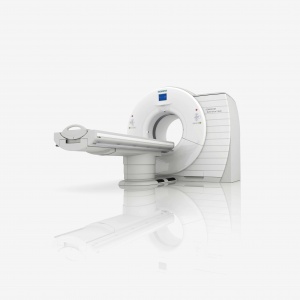November 7th, 2011 by RyanDuBosar in Research
No Comments »


Human brains have a consistent molecular architecture despite all the other genetic differences across individuals and ethnicities, according to two studies that recorded when and where genes turn on and off in multiple brain regions throughout life.
Despite individual and ethnic genetic diversity, the human prefrontal cortex shows a consistent molecular architecture, as shown in this picture. The vertical span of color-coded areas is about the same, indicating that our brains all share the same tissue at a molecular level, despite distinct DNA differences on the horizontal axis. Each dot represents a comparison between two individuals.
The research appeared in the Journal Nature and was described by the National Institutes of Health in a press release.
The first study focused on Read more »
*This blog post was originally published at ACP Internist*
April 4th, 2010 by GruntDoc in Better Health Network, News, Opinion, True Stories
No Comments »

There’s a nice WSJ article on how forward treatment of combat casualties has become possible. Kudos to these deployed doctors, and to the military that invests the time, money and effort to make things like this happen:
Dr. York, an interventional radiologist who usually performs surgery at the U.S. Naval Medical Center in Portsmouth, Va., is especially skilled at treating internal injuries. His type of surgery—using X-rays and imaging equipment to guide catheters through veins to perform micro-operations—is comparatively rare in emergency rooms. But in the cramped Kandahar hospital, it is critical to saving lives.
via Wounded Soldiers Have Increased Odds of Survival – WSJ.com.
Probably the world’s only front-line (literally) interventional radiologist.
HT: He who shall not be named.
*This blog post was originally published at GruntDoc*
February 27th, 2010 by scanman in Better Health Network, Medical Art, True Stories
No Comments »

A young adult (mid thirties), a known case of non-specific aortoarteritis (Takayasu’s arteritis) was referred for a CT scan of the Abdomen including a CT Aortogram to rule out mesenteric ischemia.
The inital plain (no IV or oral contrast) CT scan did not show any evidence of abdominal pathology. So a CT Aortogram was done.
The following is the best CT image of thoracic and abdominal wall arterial collaterals that I have seen in a decade of being a radiologist: Read more »
*This blog post was originally published at scan man's notes*
November 24th, 2008 by Dr. Val Jones in Audio, News
1 Comment »
I really like new technology, especially when it offers a very obvious advantage for patients. I recently heard about a new CT scanner that is so fast, it dramatically reduces radiation exposure for patients and can take crisp images of moving organs (like the heart). I asked to speak with Siemens’ VP of Sales and Marketing, Dr. André Hartung, to find out about the new Somatom Definition Flash Dual Source CT Scanner (it takes longer to say the machine’s name than to scan your entire body). Of course, I invited my Medgadget friend, Gene Ostrovsky, to join the call. I’ve included a “bonus track” for more advanced readers at the end of this blog post. Enjoy!
Listen to the podcast here:
[audio:http://blog.getbetterhealth.com/wp-content/uploads/2008/11/andrehartunglowq1.mp3]
Dr. Val: Just to set the stage for our listeners – can you explain what a CT scanner is, and how it differs from an MRI?
Hartung: Both CT scanners and MRI machines allow healthcare professionals to look inside the human body for diagnostic purposes. While CT scanners use x-rays to produce images, MRI machines use magnets. CT Scanners are very fast and widely available – almost every hospital has one.
Dr. Val: When would a doctor want to use a CT scanner instead of an MRI machine?
Hartung: CT images are especially good at detecting cancer. Also, because CT scans can be done so quickly, they are also useful diagnostic tools for stroke, heart attack, or when a patient is in critical condition – when every second counts.
Dr. Val: You said that CT scans are based on x-ray technology. How much radiation exposure does the average CT scan cause?
Read more »















